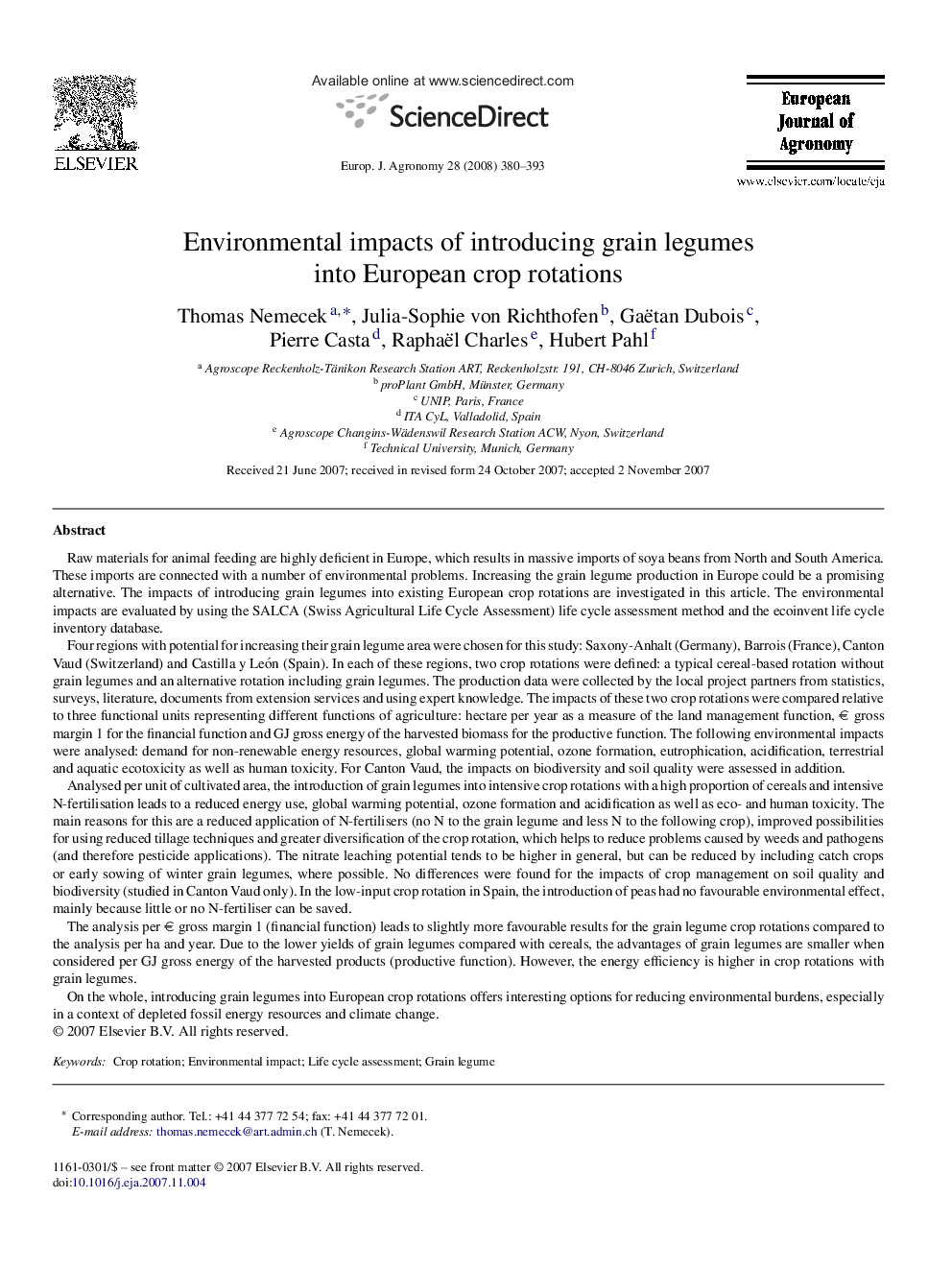| کد مقاله | کد نشریه | سال انتشار | مقاله انگلیسی | نسخه تمام متن |
|---|---|---|---|---|
| 4509471 | 1624519 | 2008 | 14 صفحه PDF | دانلود رایگان |

Raw materials for animal feeding are highly deficient in Europe, which results in massive imports of soya beans from North and South America. These imports are connected with a number of environmental problems. Increasing the grain legume production in Europe could be a promising alternative. The impacts of introducing grain legumes into existing European crop rotations are investigated in this article. The environmental impacts are evaluated by using the SALCA (Swiss Agricultural Life Cycle Assessment) life cycle assessment method and the ecoinvent life cycle inventory database.Four regions with potential for increasing their grain legume area were chosen for this study: Saxony-Anhalt (Germany), Barrois (France), Canton Vaud (Switzerland) and Castilla y León (Spain). In each of these regions, two crop rotations were defined: a typical cereal-based rotation without grain legumes and an alternative rotation including grain legumes. The production data were collected by the local project partners from statistics, surveys, literature, documents from extension services and using expert knowledge. The impacts of these two crop rotations were compared relative to three functional units representing different functions of agriculture: hectare per year as a measure of the land management function, € gross margin 1 for the financial function and GJ gross energy of the harvested biomass for the productive function. The following environmental impacts were analysed: demand for non-renewable energy resources, global warming potential, ozone formation, eutrophication, acidification, terrestrial and aquatic ecotoxicity as well as human toxicity. For Canton Vaud, the impacts on biodiversity and soil quality were assessed in addition.Analysed per unit of cultivated area, the introduction of grain legumes into intensive crop rotations with a high proportion of cereals and intensive N-fertilisation leads to a reduced energy use, global warming potential, ozone formation and acidification as well as eco- and human toxicity. The main reasons for this are a reduced application of N-fertilisers (no N to the grain legume and less N to the following crop), improved possibilities for using reduced tillage techniques and greater diversification of the crop rotation, which helps to reduce problems caused by weeds and pathogens (and therefore pesticide applications). The nitrate leaching potential tends to be higher in general, but can be reduced by including catch crops or early sowing of winter grain legumes, where possible. No differences were found for the impacts of crop management on soil quality and biodiversity (studied in Canton Vaud only). In the low-input crop rotation in Spain, the introduction of peas had no favourable environmental effect, mainly because little or no N-fertiliser can be saved.The analysis per € gross margin 1 (financial function) leads to slightly more favourable results for the grain legume crop rotations compared to the analysis per ha and year. Due to the lower yields of grain legumes compared with cereals, the advantages of grain legumes are smaller when considered per GJ gross energy of the harvested products (productive function). However, the energy efficiency is higher in crop rotations with grain legumes.On the whole, introducing grain legumes into European crop rotations offers interesting options for reducing environmental burdens, especially in a context of depleted fossil energy resources and climate change.
Journal: European Journal of Agronomy - Volume 28, Issue 3, April 2008, Pages 380–393